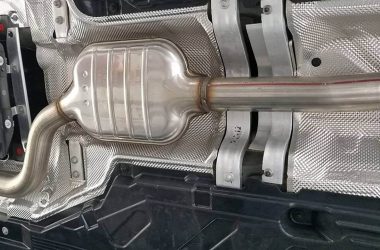Many drivers have observed their battery voltage gauge moving between values when driving because this sign should never be overlooked. Your vehicle utilizes basic battery voltage gauge readings displayed on your dashboard to monitor its electrical state. Vehicle owners should analyze the needle movements or numerical fluctuations since they could represent either typical operation or hidden electrical problems that need fixing.
Table of Contents
Let’s dive into the main reasons why your Battery Voltage Gauge Keep Going Up and Down.
1. Normal Alternator Behavior
One of the most common (and harmless) reasons for voltage fluctuation is the natural operation of your alternator.
- At idle: The alternator generates less voltage because it’s spinning slower, sometimes dropping the gauge slightly (12.6–13.5 volts).
- While driving: The alternator works harder and spins faster, boosting the voltage to around 13.8–14.5 volts.
These changes are perfectly normal — especially if you’re running additional electronics like headlights, air conditioning, or charging a phone.
2. Battery Condition
A weak or aging battery might cause voltage readings to fluctuate wildly.
Signs your battery could be the issue include:
- Slow engine cranking
- Dim headlights
- Frequent need for jump-starts
- Battery over 3–5 years old
If the battery can’t hold a stable charge, the alternator has to work overtime, causing visible swings on the gauge.
3. Bad Alternator or Voltage Regulator
If your alternator or its built-in voltage regulator is failing, you might see extreme ups and downs on the gauge.
Symptoms of a failing alternator:
- Flickering dashboard lights
- Unusual noises (grinding or whining)
- Warning lights (like the battery icon)
The voltage regulator’s job is to maintain a steady output. If it’s bad, your car might overcharge or undercharge the battery, which could damage other electrical components over time.
4. Loose or Corroded Connections
Sometimes the problem isn’t the battery or alternator — it’s the wires in between.
Look for:
- Corroded battery terminals
- Loose alternator connections
- Frayed or damaged ground wires
Bad connections can cause intermittent voltage drops or spikes as the circuit makes and breaks contact.
Also Read: How to Bypass Ford PATS System
5. Heavy Electrical Load
The alternator faces difficulty maintaining power output when you handle many electrical devices (sound systems, heaters, defrosters, etc.) while traveling at slow RPM speeds. A drop in the voltage becomes noticeable when multiple electrical systems are operating while the issue resolves when systems are deactivated or driving speed increases.
6. Faulty Gauge or Sensor
Finally, don’t rule out the possibility that your voltage gauge itself is malfunctioning.
If the car drives perfectly fine, the lights are stable, and you have no trouble starting, the sensor or the gauge might be the problem — not the battery or alternator.
What Should You Do?
- Test the battery: A load test will show if it’s healthy.
- Inspect the alternator: A mechanic can quickly check output with a multimeter.
- Check wiring and terminals: Make sure everything is clean and tight.
- Monitor patterns: When exactly does the gauge fluctuate? Only at idle? Only with the headlights on?
If in doubt, it’s always smart to have a professional look at it. Catching a charging system issue early can save you from being stranded with a dead battery later.
Final Thoughts
Your battery voltage gauge may experience minor changes but major or rapid changes indicate you need to address an existing problem. Monitoring your voltage gauge closely shows you when problems start before the repair needs become major.
Do you notice your battery gauge moving frequently? Post your experiences and questions about battery voltage gauges in the provided comment section.








